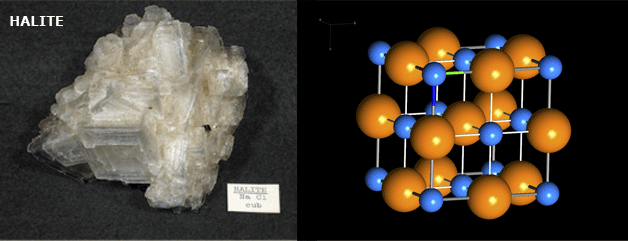
What Is A Mineral?
Here is our formal definition of a mineral:
- A mineral is inorganic
- A mineral is naturally occurring
- A mineral has a definite chemical composition
- A mineral has crystal structure
The fourth point is the important one that we are going to focus on here.
So, what is crystal structure?
Crystal structure is a continuous ordered arrangement of one or more elements. This is simply a fancy way of saying that minerals are composed of elements that are stacked in an orderly and neat fashion. You can think of elements as different sized marbles (except, in this case, the marbles are all very, very tiny!). Based on the relative sizes of the marbles, they can be stacked in different ways (see the figure).
A good example of a simple mineral is table salt (Yes, salt is a mineral.). The proper mineral name for table salt is halite, and a geologist will often identify it by tasting it. Salt is composed of two elements; Sodium (Na) and Chlorine (Cl). Sodium and chlorine are strongly attracted to each other and stack together into a cubic crystal structure (see figure). Individual salt (halite) crystals have a cubic shape to them, which is mimicking the way that the individual elements are stacking together. Even though the elements are much too small to be able to see with your eyes (or even most microscopes), you can tell how they are stacking together by looking at the shape of the salt crystals.

| Previous Item: What are rocks, minerals, and elements? |
Go Up: Learn About Rocks |
Next Item: Why is crystal structure important? |

